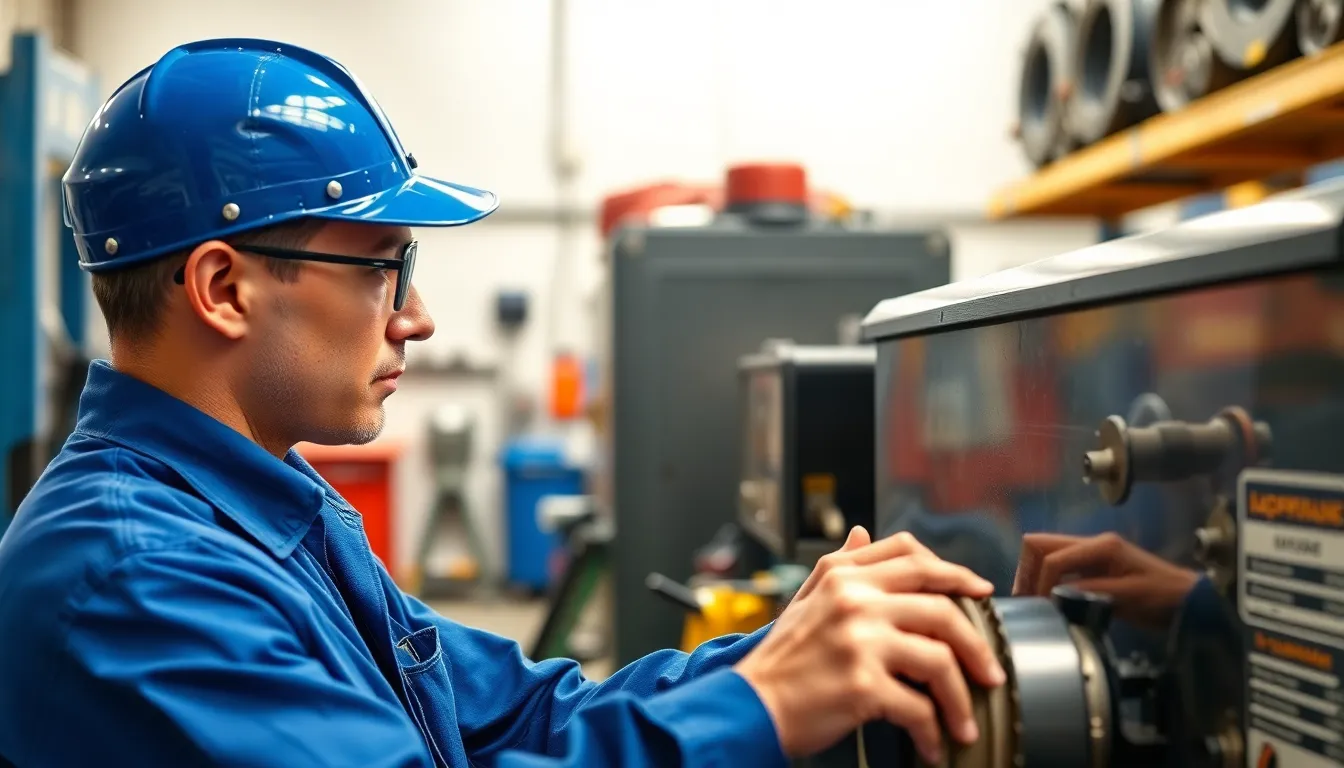Table of Contents
ToggleEveryone loves a good surprise, but not when it comes to equipment breakdowns. Preventive maintenance is like that trusty umbrella you keep forgetting to take out—when you finally need it, you’re glad it’s there. A preventive maintenance template is your secret weapon, ensuring your machinery runs smoother than a well-oiled machine (pun intended).
Understanding Preventive Maintenance
Preventive maintenance involves regular, planned maintenance activities aimed at preventing unexpected equipment failures. This proactive approach ensures optimal operational efficiency and longevity of machinery.
Definition and Importance
Preventive maintenance refers to scheduled inspections, adjustments, and replacements of equipment parts to prevent breakdowns. It plays a crucial role in industry as it minimizes downtime and promotes safety. Establishing a preventive maintenance protocol ensures equipment remains in top condition. This method mitigates risks and enhances overall productivity. Organizations adopting this strategy often see improved reliability and reduced operational costs.
Benefits of Preventive Maintenance
Numerous advantages accompany effective preventive maintenance. Enhanced equipment lifespan results from regular upkeep and timely interventions. Reduced downtime correlates with less disruption to operations, optimizing productivity levels. Financial savings stem from avoiding costly repairs that arise from neglect. Increased safety not only protects employees but also reduces liability risks. Overall, implementing preventive maintenance fosters a culture of efficiency within an organization, driving long-term success.
Key Components of a Preventive Maintenance Template

A preventive maintenance template comprises several critical elements that enhance efficiency and effectiveness. These components ensure that maintenance activities are systematic and targeted.
Asset Identification
Asset identification involves cataloging all equipment requiring maintenance. Each asset should include details like make, model, and serial number. Tracking locations of equipment helps in planning and scheduling maintenance tasks. Identifying critical assets allows prioritization based on their impact on operations. This practice ensures focused resources and attention on machinery that affects productivity the most.
Maintenance Tasks and Frequencies
Defining maintenance tasks and frequencies is essential for a proactive approach to care. Each task should be specific, such as lubrication, cleaning, or part replacement. Frequencies depend on manufacturer recommendations or organizational needs. Scheduling intervals, whether monthly, quarterly, or annually, provides structure. Regularly reviewing these tasks ensures that maintenance remains relevant to operational demands.
Documentation and Record Keeping
Documentation and record keeping maintain a detailed history of all maintenance activities. This aspect includes logs of inspections, repairs, and part replacements. Accurate records facilitate data analysis to identify equipment performance trends. Effective documentation supports compliance with regulatory standards. Keeping this information organized aids in planning future maintenance and verifying the effectiveness of the preventive strategies.
How to Create a Preventive Maintenance Template
Creating a preventive maintenance template involves several critical steps to ensure efficiency and effectiveness.
Step-by-Step Guide
- Identify all machinery requiring maintenance. Start by listing equipment used within operations.
- Prioritize equipment based on its operational impact. Critical assets should receive maintenance first.
- Define specific maintenance tasks. Tasks might include inspections or part replacements.
- Set maintenance frequencies. Frequencies should align with manufacturer recommendations or best practices.
- Document each maintenance activity. Record keeping supports compliance and future planning.
Tools and Resources
Utilizing the right tools enhances the effectiveness of a preventive maintenance template.
- Software Solutions: Several maintenance management tools streamline scheduling, tracking, and reporting.
- Checklists: Creating detailed checklists ensures no task is overlooked during inspections.
- Training Materials: Providing training resources equips employees with essential maintenance skills.
- Regulatory Guidelines: Accessing regulatory standards aids in compliance and safety.
Adopting these resources helps maintain optimal operations and fosters a proactive maintenance culture.
Best Practices for Using a Preventive Maintenance Template
Using a preventive maintenance template effectively requires adherence to certain best practices. Implementing these practices ensures optimal use and maximizes the benefits of preventive maintenance.
Regular Review and Updates
Regular reviews and updates of the preventive maintenance template are crucial. Assessing the template allows identification of outdated practices and the incorporation of new insights. Scheduling reviews quarterly promotes continuous alignment with operational requirements. Updating maintenance tasks based on equipment performance data enhances efficiency. Adjustments prevent missing critical maintenance activities, ensuring machinery operates at peak performance. Utilize feedback from maintenance staff to improve the template structure. This revision process cultivates a culture of proactive maintenance.
Training and Involvement of Staff
Training staff on the preventive maintenance template fosters engagement and responsibility. Providing staff with comprehensive training ensures understanding of their roles in the maintenance process. Involvement also increases accountability for completed tasks. Conducting regular training sessions reinforces best practices and updates staff on new procedures. Encouraging team collaboration allows for sharing experiences and best practices. This collective involvement builds a sense of ownership, improving overall maintenance efforts. Enhanced staff participation directly contributes to the effectiveness of the preventive maintenance strategy.
Implementing a preventive maintenance template is essential for any organization aiming to enhance equipment reliability and operational efficiency. By prioritizing regular maintenance tasks and fostering a proactive culture, businesses can significantly reduce unexpected breakdowns and costly repairs.
The systematic approach outlined in the template not only streamlines maintenance processes but also encourages employee engagement and accountability. Regular assessments and updates ensure that the maintenance strategy evolves with changing operational needs.
Ultimately, adopting a preventive maintenance template lays the foundation for a safer workplace and a more productive environment, driving long-term success and sustainability.







